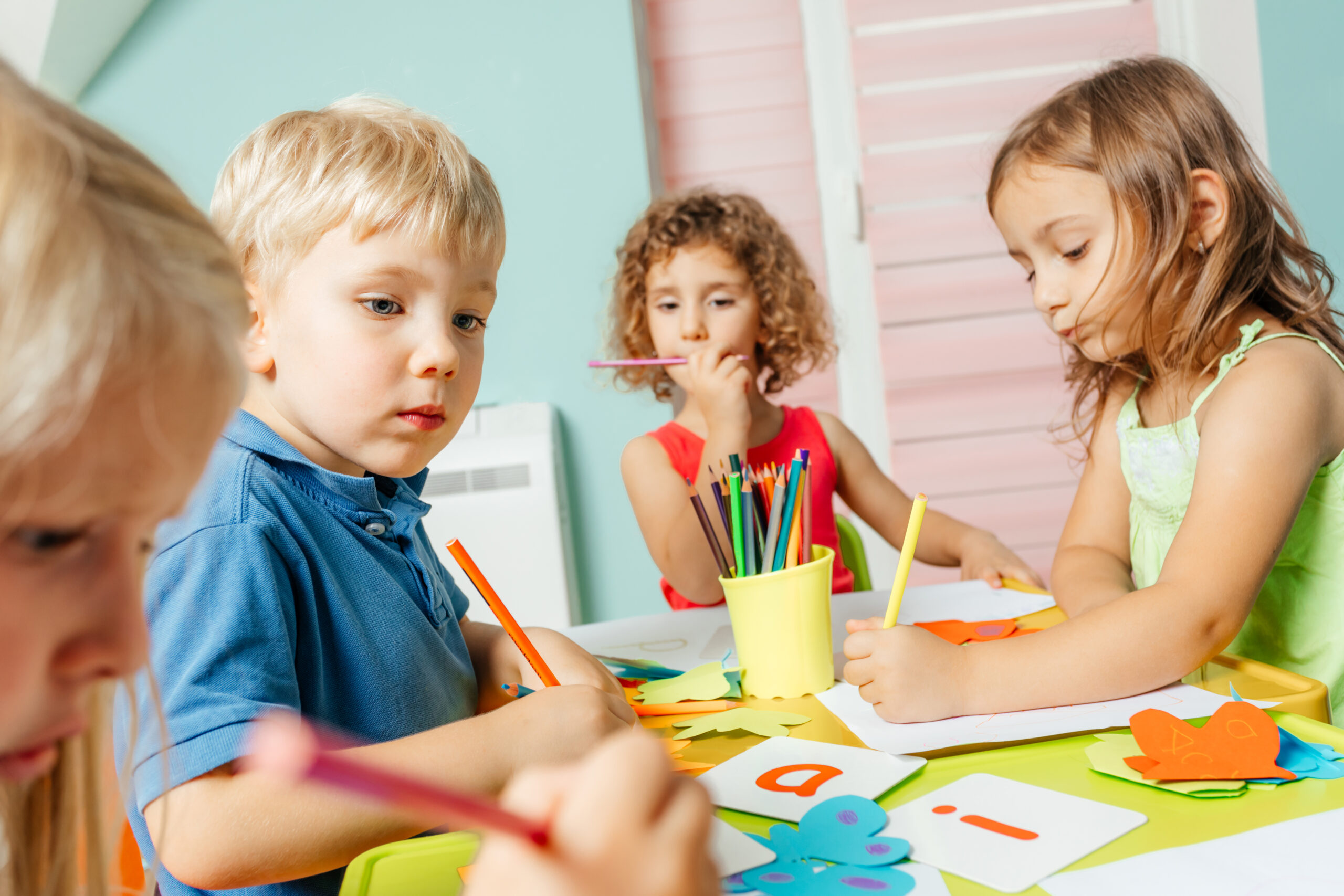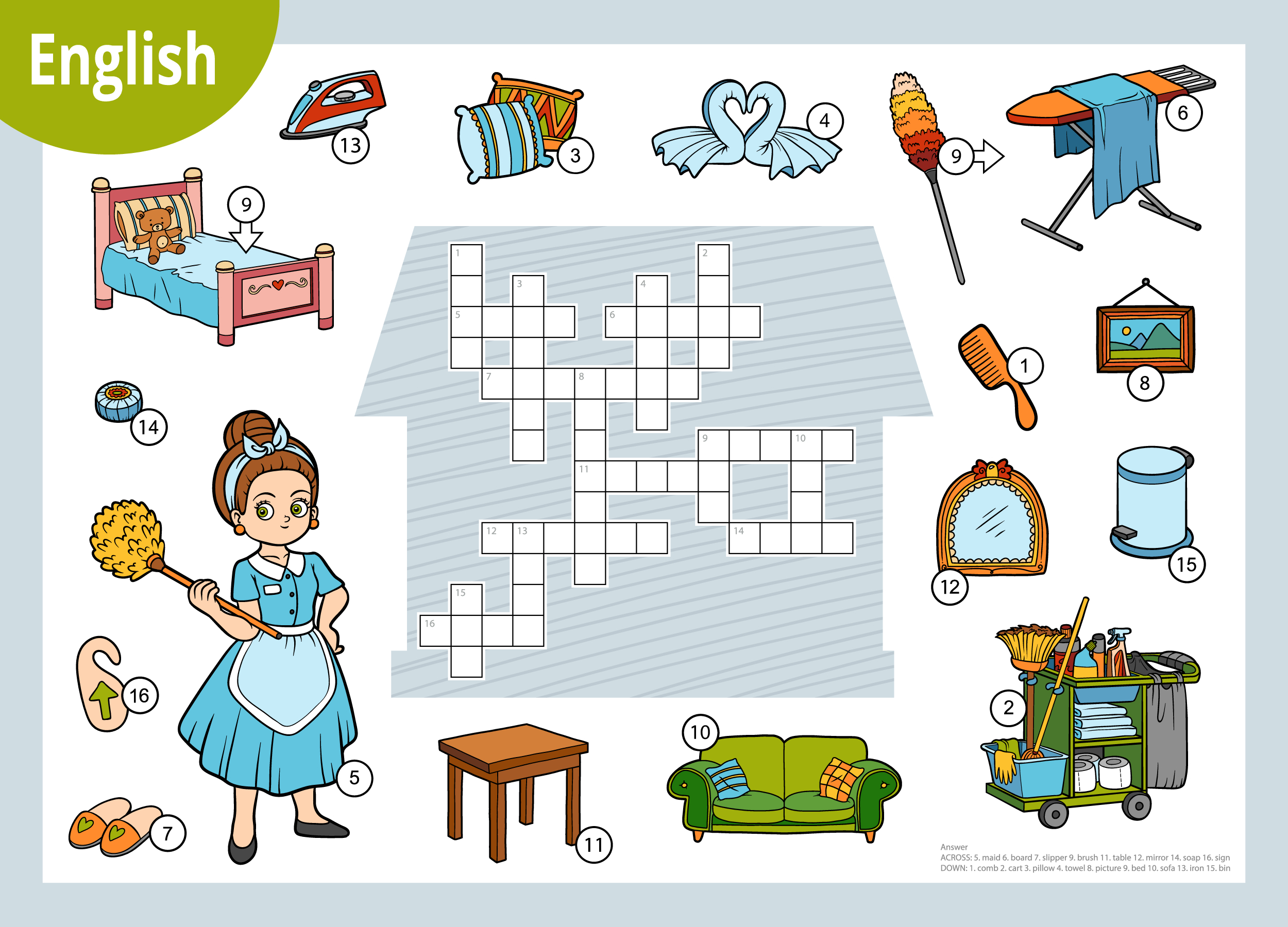- Names of rooms – essential parts of a home
- Interior parts of a house – furniture
- Exterior parts of a house – around the house
- Different buildings – different parts of a building
“Home, sweet home!” – we often use these words after a vacation or a longer time of absence from our homes. There is something special in our homes which makes them our safe space, where we can truly be ourselves. However, no matter how many positive feelings and memories we have in our houses, as a family, we need to take care of the interior and exterior of our house.
A well-maintained house is something you can be proud of. And don’t forget, children should help their parents with the house chores. These are actually great opportunities to learn new English vocabulary together. Find out what are the names of interior parts of a house and how to describe the exterior parts of a house in English.
Make learning English a fun activity for your child. Try learning in a stress-free environment with many games, fun activities, and a casual approach. You can do it on your own at home, or explore Novakid’s innovative approach to teaching English online to kids aged 4 to 12. There are numerous benefits of such learning for the little ones. But, for now, let’s find out more about some of the essential vocabulary when it comes to describing parts of the house in English! Go on and explore the world around you!
Names of rooms - essential parts of a home
Each house usually consists of several rooms. We all need a place to cook, to sleep, to relax and to study. This is why we organize and decorate rooms in our houses, to give them a purpose. In this section you will find out all the important room names. They are essential while talking in English about one’s home. Let’s learn together some of the most popular parts of a house in English.
- Library
- Study room
- Walk-in wardrobe
- Hallway
- Corridor
- Cellar / Basement
- Game room
- Family room
- Mud room
- Kitchen
- Pantry
- Dining room
- Living room
- Conservatory
- Utility room
- Bathroom
- Toilet
- Kids room
- Bedroom
- Guest room
- Spare bedroom
- Attic
- Staircase

Interior parts of a house - furniture
Another important vocabulary section for parts of a house in English is… furniture. Now that we learned names for rooms, it’s time to find out what furniture can be found in specific rooms. It’s actually the furniture which gives rooms their unique style and vibe, so let’s learn different names of furniture for sitting, cooking, and storing things in the house. Using the new vocabulary, can you try to describe your favorite furniture with your child?
- Sofa
- Armchair
- Chair
- Stool
- Single bed
- Queen size / King size bed
- Bedside table
- Bookshelf
- Dressing table
- Desk
- Television
- Mirror
- Curtains
- Blinds
- Chest of drawers
- Wardrobe
- TV stand
- Cushions
- Dining table
- Coffee table
- Washing machine
- Dryer
- Sink
- Toilet
- Shower
- Shower curtain
- Tiles
- Bath
- Lamp
- Fan
- Fireplace
- Cooktop
- Countertop
- Oven
- Fridge
- Stove
- Dishwasher
- Microwave
- Cupboards
Exterior parts of a house - around the house
If you live in a residential flat, there might not be as many outdoor house objects that would appear around a bungalow or a detached house. Anyway, you never know when you’ll be moving homes again and what facilities you will have around your new house. So, let’s learn together what we can find around the house.
- Greenhouse
- Treehouse
- Shed
- Garage
- Porch
- Balcony
- Terrace
- Wine cellar
- Fence
- Gate
- Column
- Front door
- Windows
- Roof
- Chimney
- Foundation
- Trash bins
- Mailbox
- Walkway / pavement
- Driveway
- Grass
- Plants
- Garden
- Pool
- Bench
- Sunbed
- Hammock
- Outside lighting
- Swing
- Playground
Different buildings - different parts of a building
Last but not least, even though the interior of our houses usually consists of more or less the same rooms, such as bedrooms, a bathroom and a kitchen, all around the world, there are different types of buildings in which people live. In the UK, the most popular home types are terrace houses in the city center and semi-detached homes in smaller villages. In the US, we are most likely to come across bungalows in the outskirts and skyscrapers in the big cities. In Eastern European cities, most people live in blocks of flats and residential buildings. Here are some of the popular names of different types of buildings.
- House
- Single-family house
- Semi-detached house
- Terraced house
- Bungalow
- Villa
- Mansion
- Palace
- Cottage
- Block of flats
- Residential flat
- Residential building
- Skyscraper
- Cabin
- Container house
- House-boat
- Tenement
- Mobile home (RV – Recreational Vehicle)
- Penthouse
- Condominium
No matter how many floors, rooms and square meters your house has, your child can still start learning English online with Novakid. Each English lesson at Novakid lasts only 25 minutes, which means that kids stay focused throughout the whole lesson. All you need to fully participate in online classes with Novakid is a computer with connection to the internet. All the learning materials are provided via a dedicated online platform. There is no need to print out any worksheets or waste time commuting to and from a regular English school.
What’s more, Novakid uses an immersive approach to language learning. This means that students learn English in much the same way that natives do – through communication with native teachers in a fun virtual classroom. All classes are taught 1:1, meaning that students really get to know their regular teachers. Also, Novakid programs are based on the CEFR framework and consist of 4 main levels, as well as a special program for preschool students and two advanced speaking-intensive courses (Time2Talk and Virtual Explorer).
Don’t hesitate any longer and try learning English with Novakid. Sign your kid up for your first free trial lesson. Get familiar with Novakid’s approach to teaching English to the little ones, and find out all the possibilities your child can benefit from instantly.








































